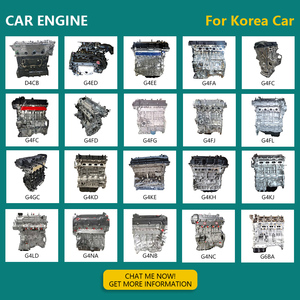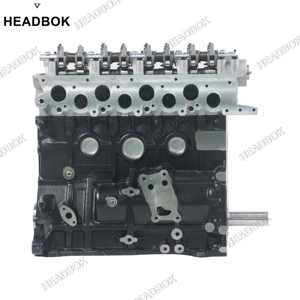(2019 products available)













































































































































































































HB blocks come in different types, each offering unique features and benefits. Here are some common types:
Standard Blocks
These are the fundamental building units of the HB pencil. Typically, they come in a range of pencil lead grades, from very soft (B) to very hard (H), including HB, which offers a balance between smoothness and hardness. These standard blocks are ideal for general-purpose writing and drawing activities.
Thick Lead Blocks
Thick lead blocks are normally used to denote pencils with a broader lead diameter. Such leads are less likely to break and are perfect for filling in large areas or making bold, striking lines. These blocks are popular among artists and individuals who engage in heavy writing tasks.
Colored Pencil Blocks
These blocks feature pencils with colored leads. They come in a wide array of colors and are utilized for drawing, shading, and adding illustrations to written texts. These blocks are commonly used by children and in creative tasks that require vibrant colors.
Mechanical Pencil Blocks
Mechanical pencil blocks comprise pencils that utilize a thin, retractable lead instead of the wooden pencil block. These blocks carry replaceable lead inserts in different grades and usually include features such as built-in erasers and pocket clips. They are ideal for individuals who prefer a consistent line width and do not want to frequently sharpen their pencils.
Charcoal Pencil Blocks
Charcoal pencil blocks consist of pencils that produce a wide range of deep blacks. These pencils are particularly useful for drawing and come in soft, medium, and hard grades to allow for different levels of darkness and texture. This makes them a popular choice among artists.
Water-Soluble Pencil Blocks
Water-soluble pencil blocks consist of pencils that can be blended with water to form a wash. These blocks are useful for creating different artistic effects and come in various lead types, including colored. These pencils are widely used by artists who engage in mixed media work.
Pastel Pencil Blocks
Pastel pencil blocks are made up of pencils that contain pastel pigments. These pencils are used to draw directly on paper and are later smudged to achieve a blended effect. They are useful for creating soft, creamy lines and are popular among artists who use pastel mediums.
When choosing hb blocks for business, buyers should consider the block's size and weight, intended use, and customization options. These factors will enable buyers to select products that match their target customers' needs and preferences.
Size and weight
The size and weight of hb blocks often determine their usage. For instance, smaller and lighter blocks are ideal for younger children because they can easily handle and move them. On the other hand, larger and heavier blocks are suitable for older kids. Therefore, business owners should check the size and weight of the blocks before purchasing them.
Intended use
Typically, hb blocks serve different purposes. Some are used for play and learning, while others are for art and drawing. Therefore, business owners should consider the intended use of the blocks they want to purchase. This will enable them to get blocks that are most appropriate for their target customers.
Customization options
Some manufacturers allow buyers to customize hb blocks according to specific preferences or requirements. Customization options may include adding colors, designs, or even names to the blocks. Such customization features can be beneficial for customers looking for personalized products for gifts or promotional items.
Safety and quality are the most important things for any product, including blocks for kids. Here are some of their safety features:
Non-toxic materials
Most block toys are made with non-toxic materials to ensure the safety of the children playing with them. These materials do not contain any harmful chemicals that can be ingested by children. This makes them a safe option for kids.
Smooth edges
Blocks designed with smooth edges ensure that children do not get cuts or bruises while playing. This feature also ensures that there are no injuries when carrying or moving around the toys.
Size
Some blocks are designed in sizes that are hard to swallow. This ensures that children do not choke when playing with or trying to put the toys in their mouths. The sizes are also easy to grasp by small hands.
Firm construction
Some types of blocks are very well constructed and do not break easily. This ensures there are no sharp pieces that can injure a child. It also ensures that the child does not get stuck in any moving parts.
Quality
When it comes to quality, most blocks are made of durable material like plastic or wood. They can withstand rough play and last for a long time. The material is also very easy to clean and sanitize.
Q.1 How do I know if an Hb pencil is good?
HB pencils are known for their balanced hardness and are commonly used for general writing and drawing. To determine if an HB pencil is good, one should look for smooth and consistent lead that produces clear, even markings without skipping or smudging. Good quality wood that sharpens easily without splintering is essential, as is a durable and comfortable eraser that removes markings cleanly without damage to the paper.
Q.2 What are the uses of HB blocks?
HB blocks are versatile and primarily used for writing, sketching, and drawing. They are suitable for various applications, including schoolwork, professional writing, and artistic endeavors, due to their medium hardness, which makes them ideal for both precise line work and shading.
Q.3 What are the advantages of HB blocks?
HB blocks offer several advantages, including their versatility for different writing and drawing tasks, their balanced hardness that provides a smooth writing experience without excessive wear on the paper, and their ability to produce clear, readable markings that are easy to erase if needed.
Q.4 What is the difference between an H and B in HB blocks?
The difference between H and B in HB blocks lies in the pencil lead's hardness and darkness. H pencils have harder leads that produce finer, lighter marks, making them ideal for precise, detailed work and writing that requires clarity. B pencils have softer leads that create darker, broader lines, which are better for drawing and shading. The numbers indicate the degree of softness or hardness, with higher numbers producing softer or harder leads.